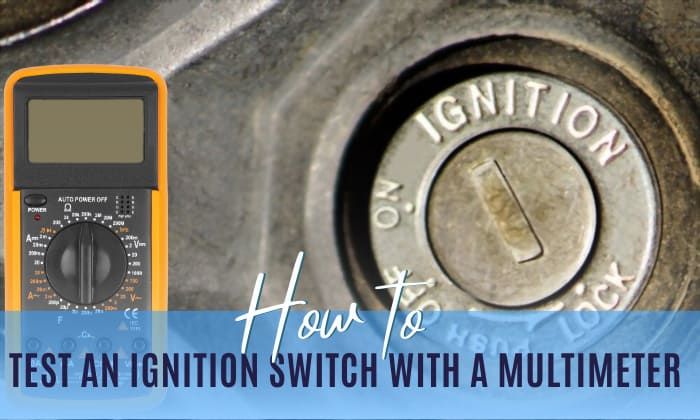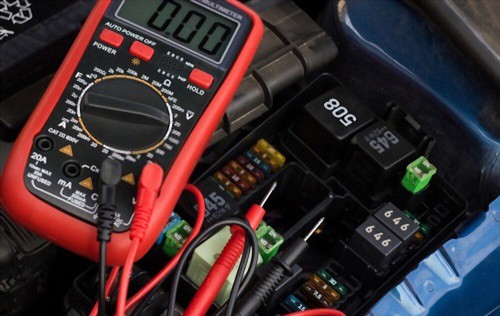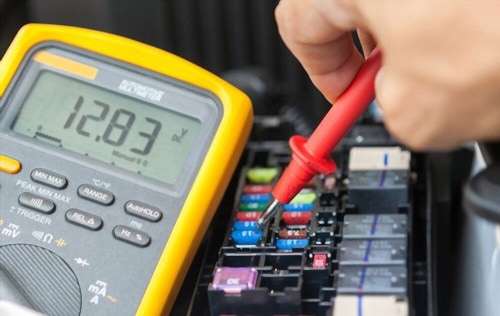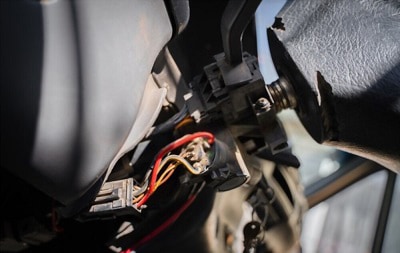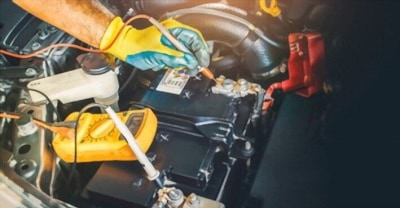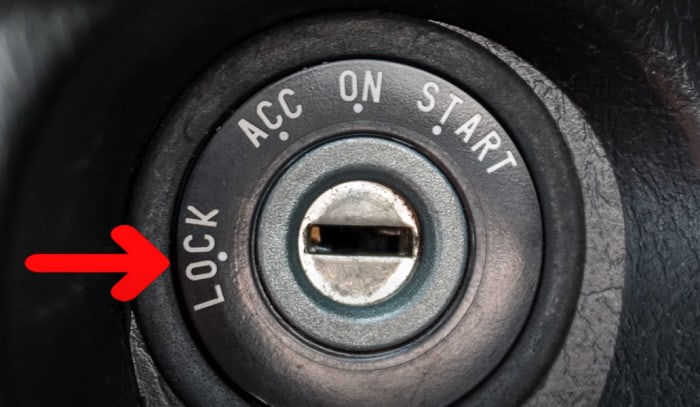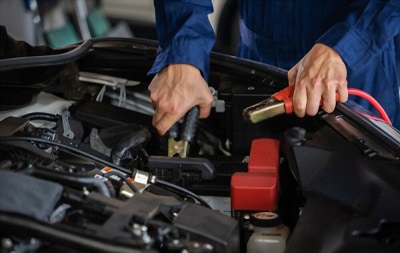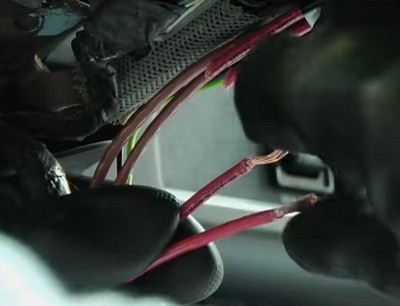The ignition switch is an essential component of your vehicle as it initiates almost all the needed commands. Hence, a faulty ignition switch will obviously open various problems— from simple to dangerous road problems.
That’s why it is crucial to always test if your ignition switch is in the best condition. Wanna know how to test an ignition switch with a multimeter? Read through this article for instruction.
Table of Contents
How to Check an Ignition Switch With a Multimeter
A multimeter is an instrumental tool for your vehicle’s maintenance, whether on tractor, car, motorcycle, or even boat! Here, I will show you the different methods of using a multimeter to troubleshoot the ignition switch.
Method 1: Check the continuity of the ignition switch
Step 1: Access inside the ignition switch
Of course, to diagnose ignition switch, you first need to access the ignition switch.
To do it, remove the steering column and the shroud that covers the wiring using a screwdriver.
After that, insert your key into the switch and turn out the switch in the Off possitio.
Step 2: Set your multimeter and position the probes in the right place.
Once you can access the wirings, locate the module’s wire or the power feed.
This one varies from vehicle to vehicle, so it’s better to check your manual if you are going to test boat ignition switch or motorcycle ignition switch.
After you locate it, set your multimeter into Direct Current (DC Voltage). Typically, this is represented by the symbol “V” with a dashed line beneath the solid line.
Adjust the device’s dial to the 20 DC range.
Step 3: Put the ignition switch into on position and check the multimeter measurement
Lastly, the most essential ignition switch test procedure is to position the probes properly to check continuity on ignition switch properly.
-
- Clip or ground the negative (black) probe to any metal surface.
- Locate the other end of the ignition switch, you will see a housing with different wires connected to it.
- Ground the positive (red) probe on every metal connector.
- Turn the key onto its designated position everytime the probe ground a certain metal connector.
- If the measurement registers zero (0), your ignition switch is in bad shape and needs replacement.
Method 2: Checking fuse and battery
Step 1: Access and inspect the fuse strips.
The first step in this method is to check ignition switch fuse.
-
- Look for the fuse panel under the steering wheel and open it.
- Pull the starter signal fuse using the fuse puller.
- Meticulously inspect the exposed metal strips and see if they are in good condition.
- If in bad shape, replace them with a new set with the same amperage.
Step 2: Check the battery and replace it if necessary
In this step, you need to go to the hood of your car and access your battery terminal.
-
- Using your multimeter, ground or clip the negative (black) probe to any metal surface.
- Touch the positive (red) testing probe to the battery’s positive terminal.
- See if the multimeter registers anywhere near 12.6 volts.
- If not, you need to replace your battery, as it might be the reason why your vehicle is not starting.
Step 3: Check if the engine starts
After checking the fuse and the battery, turn the key into the On position. If it starts appropriately, your switch is in good condition, and the problem lies in either the fuse or the battery.
If it does not start even after you checked, or replaced the said components, you need to replace your ignition switch.
Signs of a Bad Ignition Switch
Many vehicle owners are still asking, “how to know if your ignition switch is bad?” to save themselves from the hassle and danger of a faulty ignition switch.
Here are the typical car behaviors or bad ignition switch symptoms that give away the faulty condition of your ignition.
1. The engine cranks but won’t start
One of the common symptoms of a bad ignition switch is when the vehicle won’t start but cranks, even after tuning in the key.
The ignition switch is the one that ignites the electrical connection between the battery and the vehicle starter. So a non-starting vehicle happens explicitly when there is insufficient electricity between the ignition switch and the ignition system.
2. Vehicle suddenly stalls
If your vehicle starts and dies after a few seconds, or worse, it suddenly stalls while you’re driving— it may be because of ignition switch issues.
A stalling vehicle is the most dangerous symptom of a faulty ignition switch or ignition system. Frequently testing the ignition switch is crucial, especially when this symptom occurs.
3. Occasional loss of lighting and deactivated accessories
The ignition is also responsible for keeping your vehicle’s accessories turned on. If these accessories won’t turn on or momentarily turn off even if activated, your ignition system must be defective.
4. Silent starter motor
Your vehicle usually emits a sound that signals the successful motor starting. If your vehicle didn’t produce one even after turning the key in, you must check the functionality of your ignition switch.
5. The key won’t easily turn
Your vehicle’s engine will not start if the key doesn’t turn the switch.
The most common culprit behind this is a poorly conditioned ignition switch, so it is important to test ignition lock cylinder regularly.
How Do You Start a Car With a Bad Ignition Switch?
1. Using a jumper cable
Using a jumper cable to jump-start a vehicle with a faulty ignition switch is a common measure in this situation.
You need to connect the positive terminals of the ignition coil and starter solenoid to the positive terminal of your vehicle battery.
- Open the hood of your car and access the battery and the ignition coil.
- Connect your portable jump starter or jumper cable to the battery and coil’s positive terminals.
- Next, locate the starter solenoid and its positive terminal and connect it to the battery’s positive terminal.
- Unplug the wiring of the ignition switch to the solenoid starter.
- Short the solenoid’s terminal using the screwdriver and reach the area where the ignition switch connects.
Doing this will give power to the dashboard, allowing you to start your vehicle through the starter solenoid!
2. Hotwiring
This method is mostly used to start a vehicle without using a key. Given that nature, many thieves used this to bypass the engine system and steal the vehicle.
However, this method is also helpful especially in an emergency like a bad ignition switch.
- Using a screwdriver, remove the panel that covers the inside of the steering column.
- Locate the wire connector for the ignition switch, battery, and solenoid starter.
- Once they are located, pull out the wire connector from its position.
- Locate the wire for the battery and the ignition switch.
- Cut around ½ inch of insulation from each wire using a sharp blade or any wire clipper.
- Twist the exposed ends of the battery and ignition wire together. If done correctly, the ignition and other accessories should be activated.
- Next, get the untended wire (the wire that connects to the solenoid starter) and cut at least ½ inch of insulation.
- Twist the exposed end of the last wire and connect it to the already twisted battery and ignition switch wire.
Helpful Tips/FAQs
Tips to bypass an ignition switch
If you need to start your vehicle with a faulty ignition switch, you can use a jumper cable, hot wiring, and a drill and screw to jumpstart your engine with the current condition of your ignition switch.
Can a faulty ignition switch waste your battery?
Yes, a poorly conditioned ignition switch affects the connection between the ignition switch and the battery.
In the case of faulty ignition, the battery might still be running even after you turn off the engine.
Cost of a new ignition switch
The cost for ignition switch replacement varies depending on your situation.
The price of the ignition switch itself goes up to $100 depending on its quality. If you are hiring a contractor to do it, expect to pay around $70-$150 for the labor cost.
Conclusion
A broken or faulty ignition switch can give you hassle and road troubles. Connection between you and the other parts of the vehicle is lost when you are faced in this sitaution.
Knowing how to test an ignition switch with a multimeter would save hassle as you can do it yourself, as well as a dime since you won’t need to hire a contractor anymore.

I am the last member to join Revolar and might be just the luckiest to work with dedicated people like Teddy and John. Our team has established a process where my only job is writing the best content to deliver incredible ideas and guides.


